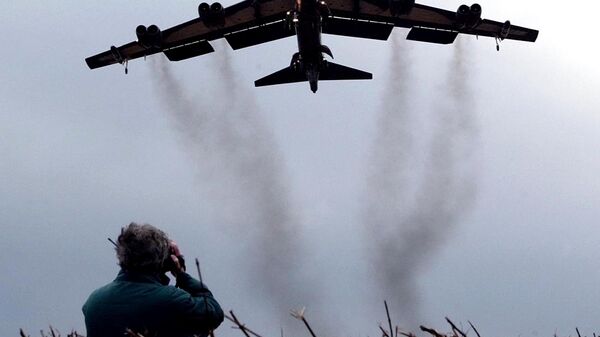The United States Army War College has released a new study warning about the Defence Department’s severe lack of preparedness “for the national security implications of climate change-induced global security challenges” over the next 50 years, and called for more funding and a change in military culture to deal with the problem.
The study, titled “Implications of Climate Change for the US Army,” points to climate change-related issues including rising sea levels, potential conflicts stemming from people lacking water and food security, epidemics and “more frequent extreme weather events” and their potential to displace tens or hundreds of millions of people, leading to increased refugee flows.
The 52-page report, commissioned by new Joint Chiefs Chairman Gen. Mark Milley, and penned by Army, Defence Intelligence Agency and NASA researchers, pays special attention to salt water intrusion inland and shifting weather patterns’ expected impact on salt water supplies. Already facing conditions “precipitously close to mission failure concerning hydration” in conflicts in Afghanistan, Iraq, Syria and Africa, the Army says innovative solutions are needed to continue to ensure supplies for US “expeditionary warfare” campaigns abroad.
The report also points to problems in the US itself, including the prospect of longer and more intense droughts straining an ageing US power grid, sparking migration and affecting US hydroelectric and nuclear facilities. “This dual attack on both supply and demand could create more frequent, widespread and enduring power grid failures, handicapping the US economy,” the report warns.

The Army also warns that growing public concerns about pollution may prompt “significant reductions on military activities (in peacetime) that produce carbon emissions,” with the US military not presently said to be adapted to “mitigate its environmental impact in both training and wartime.”
Russian and Chinese ‘Threats’
The report mentions “both challenges and opportunities” brought about by melting Arctic ice, saying this phenomenon means “conflicting claims to newly-accessible natural resources,” and “a new theatre of direct military contact between an increasingly belligerent Russia and other Arctic nations, including the US.” Russia’s “belligerence” lies in a “global pattern of aggression and attempts to reestablish great power status”, according to the report, which it says could create an Arctic “flashpoint”. The US response is said to include a billion dollar commitment for the construction of a new Polar Class heavy icebreaker for the US Coast Guard, for the Pentagon to be able to challenge Russia’s Arctic claims.
China is listed as the other major potential threat, and the report heaps praise on Beijing for being “more thoughtful about how it projects its image globally with respect to carbon emissions” while the US government is seen as “an irresponsible actor in the global environment”.
The report points to a lack of a “systemic view” in the US ability “to assess and manage risk” associated with climate change. “In contrast, in China, systems science and engineering is considered so important to the future of China that this is a course of study required for all cadres in the Chinese Communist Party’s Central Party School in Beijing,” the report notes. Ultimately, it warns that “very significant asymmetries” have emerged “in resilience between the US and China to climate-induced effects and any other type of attack or disaster.”
Recommendations? More Cash
According to the report, the military will need to adopt to a more environmentally conscious mindset, and this will “be costly in effort, time and money.” This includes promoting “a culture of environmental stewardship across the force”. as well as investment in realistic computer simulation tools to reduce real world emission-producing training, and spending on new tools to reduce weapons systems’ CO2 output. The report notes for example that the $48.9 billion in projected spending for simulations through the year 2025 is not nearly enough.
To deal with the water availability issue, the report proposes aggressive investment “in technologies both in-house and commercial off the shelf in the next 5-10 years to keep pace with rising global temperatures, especially those arid areas in or poised for conflict.”

To shield the Army from possible power grid failures, the report suggests creating military-specific power generation capabilities, including solar farms and small nuclear reactors.
Finally, whether it’s the Arctic or US military operations abroad, the report demands increased investment in intelligence gathering capabilities, both qualitatively and quantitatively.
The military’s concerns, and proposed recommendations, are understandable. Hundreds of US military bases are dotted across six of the world’s seven continents, and the US military is estimated to have a greater carbon footprint than many industrialised nations.




